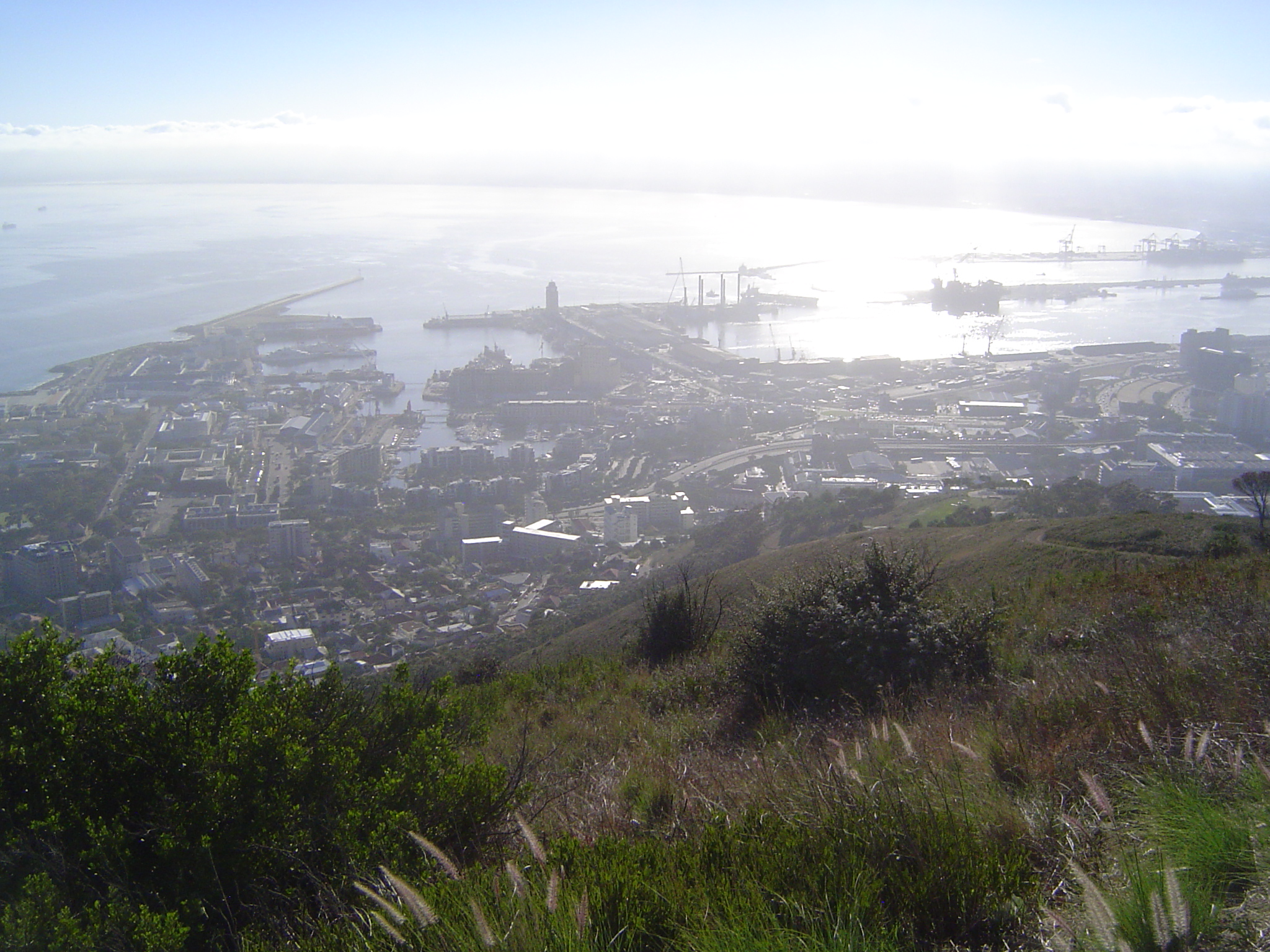
Home UpCape Town V&A Waterfront
Starting in 1989, the South African Transport Service (now Transnet) began to repurpose Cape Town's obsolete docks. The idea had first been proposed in 1980 by the architect Gawie Fagan. Twenty-five years later the V&A Waterfront (that would be Victoria and son Alfred, not husband Albert) was, measured by head count, the country's top tourist site. Sad commentary from one perspective, but maybe it's best for the crowds to pile in rather than sprawl.
On the right are the city's working docks, the Duncan and (beyond it) the Schoeman Docks. The V&A is to the left of the jetty with the Port Control Tower.
Duncan Dock, the closer one here, opened in 1945. Container ships use the outer or Ben Schoeman Dock, whose cranes can be seen on the far side of the water. (It's the country's second most important container port, after Durban, which is much closer to Johannesburg.) Along with the new docks, Cape Town got hundreds of acres of reclaimed land, much of it soon devoted to freeways. Whoosh!
That's the Control Tower on the left. We're looking over the Victoria Dock, the largest and outermost of the three Victorian enclosures. Victorian? Nitpickers alert: this dock actually opened in 1905, four years after Victoria's death.
A passage leads into the Alfred Dock, opened by Alfred himself in 1870. On the far left side, a bridged channel leads to a yacht marina; on the right, the black wall is a removable barrier to a drydock. The red tower? It's a construction of Coca-Cola crates. The world's a strange place.
From another side of the Albert Dock.
The opening into the Marina. "Hands Up!"
The marina, with lots of apartments and at least one hotel. And yachts.
The barrier is about to be raised.
One of the better features of the place is that at least some of the guts are kept working.
It's coming.
He wants to cross his fingers, but it's hard to do when you're made of plastic.
The clock tower at the opening to the Alfred Dock opened in 1883 and originally housed the harbor office.
Eventually the need for administrative space grew too great and the management moved here, to the Port Captain's Office, from 1903. The space has gone commercial, as have most all its neighbors.
What could this building be? Forget the Ferris wheel.
Now it's a museum and management office, but in 1920 it was the local office of the Union-Castle line. Ships left every Thursday at four in the afternoon for Southampton; ships left Southampton every Thursday at four in the afternoon for Cape Town. The route carried on to Durban, where ships turned around and landed here again on the way home. The company operated from 1900, when it was created by a merger (of the Union and the Castle lines, naturally) to 1977, when it died from multiple causes—for starters, try the Boeing 747.
A ground floor mall and upstairs V&A Hotel have been carved out of what was Imperial Cold Storage, built in 1896 as the Combrinck Depot. Mostly it handled meat, both for ships and the South African market. There was a big refrigeration station in the basement, below the water line.
This side fronts the Alfred Dock.
Bits of several buildings can be seen here, along with the Cape Wheel and the edge of the shopping center (and parking garage) that drive the enterprise. In 2006, the whole shebang was sold for 7.4 billion rand to a consortium of Dubai World and London & Regional Properties. They turned around and sold it in 2011 for 9.7 billion rand to Growthpoint, South Africa's largest property company, and the Public Investment Corporation, which manages the government's pension fund. On such a rock do teachers' retirements rest.
New stuff.
Yawn.